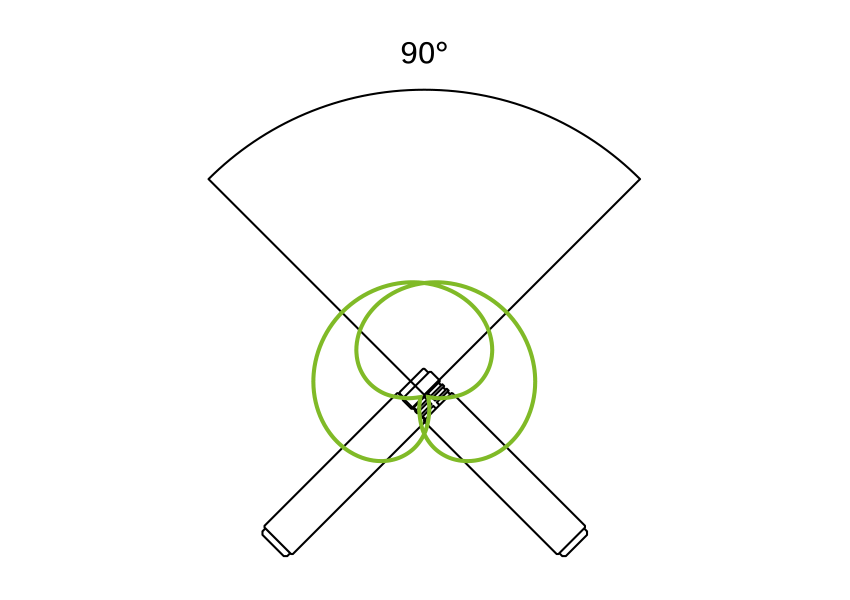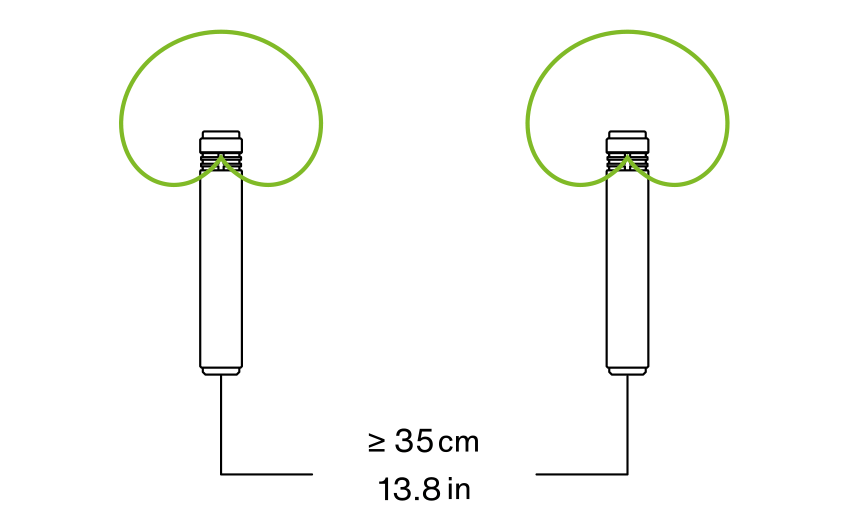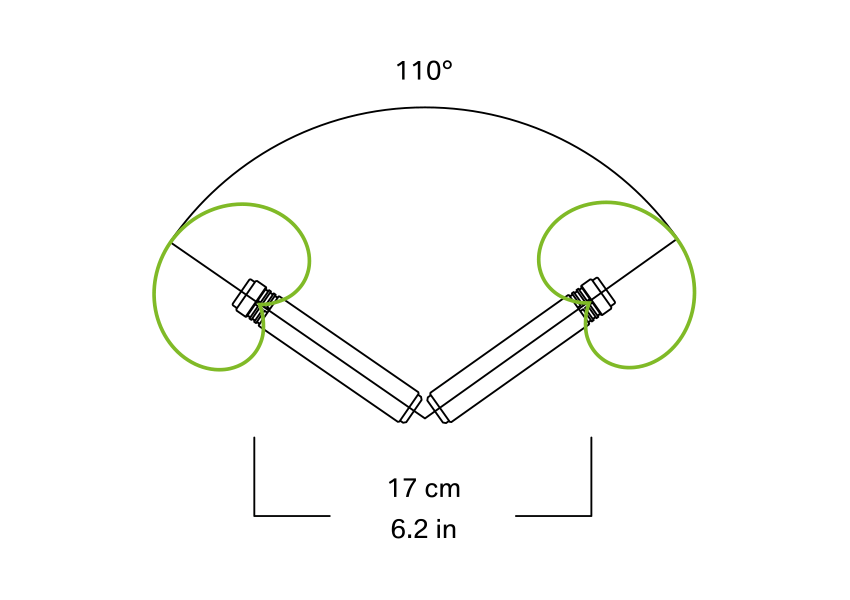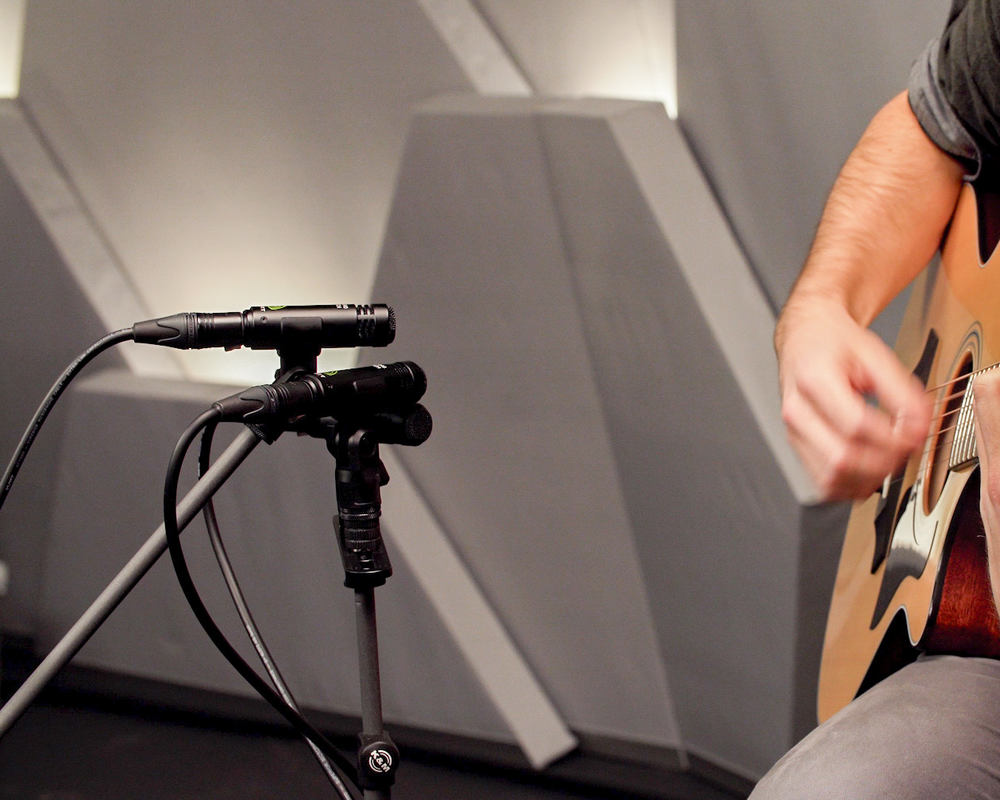
Blog
True love for great sound unites us.
Blog
True love for great sound unites us.
Stereo recording is easy and fun. It makes recordings sound more immersive and realistic.
In this blog, we’ll take a look at the basics of stereo recording, so you can start doing it on your own.
We even made a stereo recording cheat sheet for you.
Also, check out the video about stereo recording.
Stereo recording captures sound using two microphones to create a sense of space and depth, mimicking how our ears hear naturally.
It's great when you want to create an immersive listening experience by making the audio feel more realistic and dynamic. For example, in a simple singer-songwriter setup, recording the guitar in stereo will yield great results.
Stereo recording uses two microphones to create lifelike and immersive sound.
Recording drums in stereo can help achieve a realistic representation of the whole drum kit and how it sounds in a live situation.
Now, let’s listen to some sound samples so you can hear the difference.
Ok, so what do we need to start?
Important: Before you hit the record button, always set the same gain on both channels!!!
If you can set the gain digitally, set the same exact values for both channels.
Some interfaces even allow you to create a stereo link between your two channels to ensure you'll have the same gain.
You'll find a more detailed article on how to start recording here.
LEWITT stereo recording mics and audio interface
You can locate a sound source because you have two ears. Let’s say someone is talking to you from the left. There’s a difference in level between the left and the right ear. This difference in level helps you to realize that the person next to you is standing to your left.
But there’s a second factor that helps you to locate the source more precisely – the difference in time. The sound coming from the left will hit your left ear first and then the right.
By combining factors time and level, you’re able to locate sound sources.
Let’s take a look at three stereo recording techniques that use time and level differences to create a stereo effect.
XY - uses the level difference to create the stereo effect
AB - uses the time difference to create the stereo effect
ORTF - uses time and level differences to create the stereo effect
Using the XY stereo technique is easy and safe since there is truly nothing you can do wrong. Again, don't forget to set both microphone input channels to the same gain.
If you have a matched stereo pair, use it. The XY stereo technique profits the most from the matched frequency responses.
Since both capsules need to be right on top of each other, XY is a purely level-based stereo technique.
Position both mics at a 90° angle and ensure that both capsules are right on top of each other.

The AB position is a time-based stereo technique.
Start with a 35 cm distance between the microphones and extend that distance to your liking.
AB gives a good room impression, but make sure to experiment to find the right balance between the direct and diffuse sound field.
You can use cardioid and omnidirectional microphones for the AB setup. Omnidirectional mics give you a more natural bass response.

ORTF is the most natural-sounding stereo recording technique.
That's probably because the setup resembles your head. Both mics are positioned using a distance of about 17 cm and a 110° angle - kinda like where your ears would sit.
ORTF uses time and level difference to create the stereo effect.

So you might ask, when does it make sense to record the acoustic guitar in stereo.
Well, basically when the guitar is very important for the song or you want more depth.
Stereo feels like you are surrounded by the sound, a bit like if you would play it yourself and hear it in real life.
It’s also great if you want the vocals in the center and to have them surrounded by the guitar.
You can find all kinds of different stereo techniques being used on acoustic guitar, very often you'll see XY. Here's a picture that shows the XY setup with an additional mono mic.
The mics are positioned with a distance of about 30 cm and aim to where the neck joins the body of the guitar (12th fret area).

Drums are predestined to demonstrate different stereo techniques. The instrument lives very much on spatiality, and the different parts of the set can be distributed in the mix according to taste. Typically you try to keep the kick and snare in the center because that's where they have the most punch.
Some people like to record their soundstage from the audience’s perspective, others like to record it from the view of the drummer. Pay attention to that the next time you'll listen to your favorite album.
Everything from AB, XY, ORTF, and even more exotic setups can be used.